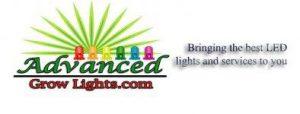Internationally renowned plant scientist JURGA MILIAUSKIENE furthers understanding of advanced horticulture lighting techniques with research conducted at the LESA Center. Nov 1st, 2019

It is well known that light is a crucial factor in the life cycle of plants. The light quality and quantity, as well as the photoperiod, have significant effects on plant growth and development. Manipulation of light for plant cultivation is an important issue plant scientists study in controlled environment agriculture (CEA), where several different artificial lighting conditions are commonly used in plant factories, growth chambers, and greenhouses. LED-based horticultural lighting systems are increasingly utilized for better control over the intensity and spectral power distribution (SPD) in CEA for optimal plant production.
As CEA efforts strive to address the needs and challenges of indoor and future farming, we must also thoroughly and precisely understand the plants. Without fully exploring the biological effects on the plants themselves under different lighting conditions, however, it is difficult to understand whether plant development is truly optimized for quality and growth rate. The plant science team at the Lighting Enabled Systems & Applications (LESA) Center at Rensselaer Polytechnic Institute (where I have been conducting plant lighting experiments as a visiting scholar) is using advanced horticulture lighting systems and research methods to better understand the physiological responses to specific wavelengths and duration of light exposure on crops commonly grown indoors, such as lettuce and micro greens — the same plants frequently grown for commercial production.
The published data currently available suggests there is great potential to increase crop yield and crop quality in CEA by using LED lighting. However, the most important factors to consider, the precise knowledge of which wavelength to use, for how long, at which photosynthetic photon flux density (PPFD), etc., are largely still guesswork. The key of using LED lighting for horticulture is to produce the highest-quality crop at the lowest cost. The question here is what is a high-quality crop? Growers usually desire high crop yield with long shelf life, good appearance, nutritional value, and aroma. Consumers typically base their plant purchases on desirable features such as appearance, freshness, color, aroma, taste, texture, nutritional value, and health benefits, among others.
Recently, LEDs have been used for the application of pulsed irradiation to plants with control of the frequencies and duty factors of light. The pulse irradiation is generated using a pulsewidth modulation (PWM) technique consisting of light and dark periods operating at various frequencies. In horticulture, the main objective of applying pulsed LED lighting is to save energy without crop growth inhibition. Because plants can grow well with milliseconds-long pulses rather than continuous exposure, it is possible to explore energy savings by extending the dark period between pulses. The idea is that a defined frequency of pulses may lead to greater production of plant biomass with fewer photons invested.
So can we achieve the same yield and crop quality by using pulsed LED lighting as compared to continuous LED lighting in CEA? Only a few reports on the effects of pulsing LED light on photochemistry, plant health, or nutritional quality have been published, and there is a serious lack of general consensus on the benefits of pulsing light for plant growth. The results of Ki-Ho Son et al. (2018) demonstrated that pulsed LED treatment with a 75% duty factor has no inhibition on the growth or photosynthetic rate as compared to continuous light, and a pulsed light treatment at 1 kHz was the most effective in terms of growth as well as energy use efficiency. Pulsed light at high frequencies (2–20 kHz, 50% duty factor) positively affects the growth of lettuce under controlled environmental conditions (M. Kanechi, 2018). Pulsed LEDs were also tested on microgreens in order to achieve a higher nutritional level (Vaštakaitė et al., 2017). Pulsed LED lighting induced secondary metabolic reactions and initiated phytochemical changes in the microgreens, where the effect depended upon the pulse frequencies of applied LED light wavelengths and varied among microgreen species.
In plants, photosynthesis is a major activity that underlies all plant function, including providing the energy required for growth, acclimation processes, and crop quality. Accordingly, an important function of any artificial horticultural lighting system in CEA is to promote photosynthesis of plants. The pulsing ability of flexible LED lighting systems to produce sufficient photon fluxes of specific wavelengths can be linked with characteristics of photosynthesis, and satisfy the photosynthesis requirements. Briefly pulsed LED lighting should increase the photochemical efficiency of Photosystem II and decrease the chlorophyll fluorescence, meaning that pulsed LED irradiation with enough PPFD for photosynthesis could be effectively used for favorable plant growth in CEA.
Information on plant species, spectral combinations and intensities, photoperiods, and different frequencies and duty ratios have been used in the published literature, but relatively little data or new data available on the effect of pulsed LEDs for various plant types makes it difficult to draw general and definitive conclusions. However, it does seem the use of pulsed LED light could be an additional tool to manage plant growth and development, and may provide energy savings by supporting favorable plant growth. Another advantage of pulsed LED light for determining frequencies and duty ratio is the ability to grow plants with high nutritional value at lower electric energy costs.
LESA‘s plant science team has developed a unique pulsed lighting tool called the Tunable Irradiant Growth Efficacy Research (TIGER) light to study and expand the breadth of knowledge on the effects of pulsed lighting for quality indoor crop production. The TIGER light generates synchronized pulses of individual color channels and allows for superb color mixing, providing spectrally uniform illumination even at short distances from the light source.
As a researcher with long-term experience in LED application for plant growth and development, my interest as a visiting scholar was to further my understanding of pulsed LED lighting by conducting a series of experiments to clarify the effects of the newly developed TIGER light module on the growth of lettuces and the response of their photosynthetic and antioxidative systems. Preliminary results indicate pulsed lighting with superb color mixing offers a path for a significant energy savings while more quickly producing desirable leafy vegetables in the near future. Pulsed lighting techniques are an innovative technology and high-speed pulsing capabilities should be included in the development of artificial horticulture lighting systems. Nonetheless, it is an important consideration for future CEA lighting systems to be able to produce high-quality crops. Being able to quantify research results and add quality data to the literature that will address the needs and challenges of more efficient indoor crop production and future farming going forward has been very rewarding.
Additional studies at LESA using the TIGER Light are underway and will provide more clarity on the effec…

